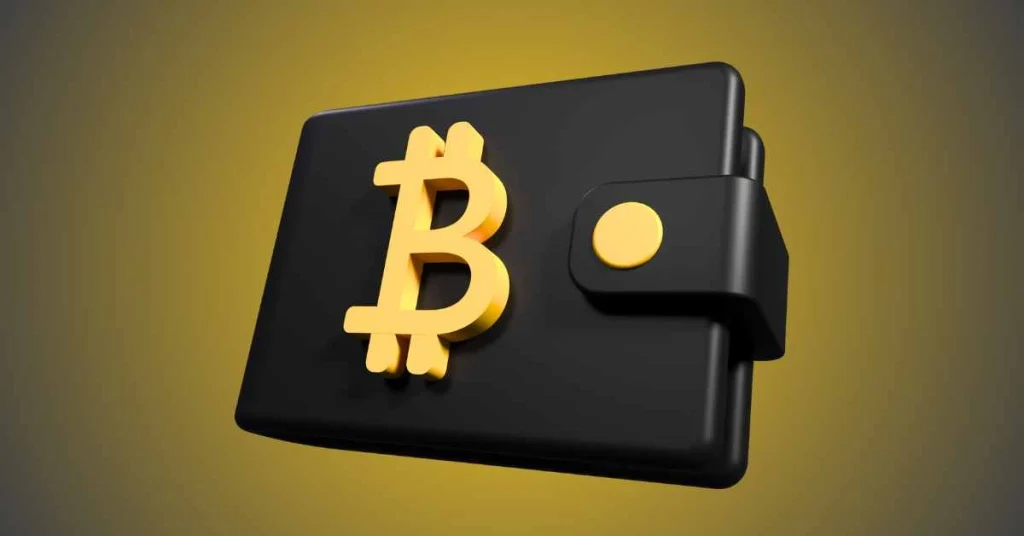Top 4 Wallets Improving UX Through Privacy and Cross-Chain Support



The post Top 4 Wallets Improving UX Through Privacy and Cross-Chain Support appeared first on Coinpedia Fintech News
Ethereum’s standards in interoperability and privacy are supporting the industry in its transition to a future where blockchain wallets are completely secure and intuitive. ERC-4337, the standard enabling account abstraction, is key to this transition. This standard enables the creation of wallets as smart contracts, enhancing functionality and providing users with benefits such as gasless transactions and social recovery.
ERC-3643, which was developed for permissioned tokenization, can embed compliance logic, transfer restrictions, and identity verification directly into a token, making it ideal for real estate, private funds, and other regulated assets.
Ethereum developers are working on ERC-7930 and ERC-7828 to improve blockchain interoperability, as wallets, block explorers, and dApps currently follow different rules, resulting in an inconsistent user experience. ERC-7930 defines a binary, machine-friendly, compact format for interoperable addresses, which is optimized for protocols that require just one representation regardless of the blockchain used.
ERC-7828 is designed to expand on that standard by introducing a human-readable layer, using formats like youraddress@blockchain for the sake of simplicity. EIP-7702 allows externally owned accounts, or EOAs, to set their code based on a smart contract. The holder of an EOA would sign an authorization that anyone can then submit as an element of the new transaction type.
The code remains valid until another authorization replaces it. Authorization can be given for one or more blockchains. In this way, EOAs mimic smart contract accounts, enabling gas sponsorships, transaction bundling, and custom permissioning setups.
1. Ambire Wallet ensures transparency and ease of use
Ambire Wallet, our first choice, enables transparency via transaction simulation, so users see what will happen to their balance prior to carrying out a transaction. They set token spending limits, and the gas tank feature makes it possible to pay gas with any ERC-20 token, including stablecoins like USDC and DAI. The user combines several transactions into one and pays gas only on that transaction.
Wallets are recoverable by email, guardians, etc. The platform consistently undergoes audits to ensure adequate resistance to potential threats. It regularly runs security competitions, such as with Code4rena, and has been hosting a bug bounty since 2021. The wallet prioritizes privacy, and not collecting any user data is an example. Ambire was the first mass wallet to offer EIP-7702 support and remains among the leaders by number of EIP-7702 delegations.
Ambire is governed by WalletDAO and the holders of $WALLET, its native token. Its most recent governance vote asked token holders how much $WALLET incentives the team should allocate for its users. The convenience fee from the wallet’s swap feature goes to the WalletDAO, bringing back value to $WALLET holders through buybacks.
Ambire recently made its buyback address public and reported that more than 50 million $WALLET tokens had been purchased, which corresponds to buybacks for 5% of the total $WALLET token supply. The team runs at least one governance vote per month.
The team behind Ambire is collaborating with the Ethereum Foundation and Wonderland to develop a wallet that showcases the benefits of ERC-7930 and ERC-7828, making cross-chain transactions more straightforward than ever. Kohaku Wallet aims to standardize how addresses are handled across blockchains, streamlining transactions for the benefit of users who currently struggle with obstacle-ridden interactions with multichain DeFi services and applications. Essentially, Kohaku Wallet is an Ambire fork. Ambire was selected because it’s among the most intuitive open-source smart wallets and offers support for Ethereum and BSC.
2. Trezor Safe 5 is ideal for frequent blockchain users
Released in 2024, Trezor Safe 5 is the most advanced version of the well-known wallet, and it’s well-suited for users who interact with blockchains often, offering intuitiveness and cutting-edge security features. One new addition is a touchscreen with haptic feedback, which makes signing transactions, setting up wallets, and recovering backups easier and more efficient, both visually and tactilely. Like its predecessor, Trezor Safe 5 offers a secure element chip and a high level of security for user funds overall.
All funds are held offline, and the platform deletes or anonymizes all customer data 90 days following purchase on Trezor Shop. Users can manually select specific coins for outgoing transactions, which provides them with greater control and privacy when sending funds. Trezor Safe 5 supports a wide variety of cryptocurrencies, including all the major ones.
You must choose the correct network when withdrawing cryptocurrency from an exchange, which would depend on the cryptocurrency you are withdrawing. For example, you’d select the Bitcoin network when withdrawing BTC.
3. Trust Wallet is flexible, intuitive, and highly secure
Trust Wallet, renowned for its ease of use and simplicity, supports thousands of cryptocurrencies. You fully control your keys and funds and can import or create wallet data through the app or browser extension, which is stored locally on your device. Trust Wallet does not collect any personal information for this purpose.
The wallet supports crypto staking, including Ethereum staking, and stores NFTs and tokens easily. It features a Web3 browser to access dApps and built-in risk monitoring tools like the Security Scanner, which helps users protect their assets and avoid scams. You can use an encrypted cloud backup and connect a hardware wallet for additional security.
Trust SWIFT is a smart contract wallet powered by account abstraction. It lets users pay transaction fees in hundreds of tokens, offers hassle-free, one-click swaps, and supports multiple blockchains, including BSC, Arbitrum, Base, Avalanche, and Optimism. SWIFT is currently more limited in its cross-platform functionality, particularly regarding importing wallets between iOS and Android, making the regular Trust better for interoperability.
SWIFT could be an excellent choice if you don’t want to deal with recovery phrases and value flexibility in transaction fees. The standard Trust Wallet is the better option if you’d rather use native tokens for transactions.
4. Zengo eliminates private key vulnerability
Zengo uses multi-party computation (MPC) technology instead of seed phrases or private keys, eliminating any associated vulnerabilities. You can buy, sell, and trade cryptocurrency directly on the app using credit cards, Google Pay, Apple Pay, etc. Zengo also provides an NFT spam filter and an in-app NFT gallery. It supports almost 400 cryptocurrencies and widely used stablecoins, such as USDC and USDT.
Like Trust, Zengo is self-custodial, and Bitcoin, Ethereum, Tron, Tezos, BNB Chain, Dogecoin, Polygon, Base, Arbitrum One, and Optimism are among the major L1 and L2 blockchains supported. It truly excels where security is concerned. Apart from MPC technology, the wallet features a three-factor authentication recovery system using the client’s email, a recovery file, and a 3D FaceLock, or an encrypted facial scan that can’t be spoofed, according to the platform. You can leave the recovery file in Google Drive or iCloud. Be warned that some people may find uploading a facial scan uncomfortable.
Zengo’s Pro option features improved withdrawal protection, linking your 3D FaceLock biometrics to withdrawals, and a Web3 firewall that warns you of suspicious dApp behavior. Zengo Pro offers a private transaction mode, in which a new Bitcoin address is generated with each transaction. All previous addresses remain valid and linked to your main account.
How new ERC standards enhance protection and prevent losses
ERC-3643 is fully compatible with any ERC-20 wallet, including those reviewed here. However, ERC-20 assumes a trustless environment, while ERC-3643 enforces eligibility and trust at the protocol level. For example, let’s take a private fund using ERC-3643 to issue security tokens representing shares, but only to accredited investors. The fund would enter the corresponding eligibility criteria, such as sanctions list screening, residency restrictions, or investor accreditation status, directly into the security token’s smart contract. Only wallets pre-approved by an on-chain identity registry will be able to hold, receive, or transfer these tokens.
The upcoming ERC-7828 standard will allow the sender to input the target blockchain when sending a payment address, including a machine-readable format for APIs as well as a human-readable format. The setup prevents losses by keeping users from sending or receiving crypto on the wrong blockchain.
Don’t hope for the best; choose the best wallet for your needs
More than a billion dollars’ worth of cryptocurrency was stolen per year in 2018, 2021, 2022, 2023, and 2024. As crypto prices and adoption rise, so do the potential losses. In 2024, the funds stolen increased by 21% year-over-year, reaching $2.2 billion, and there were 303 hacking incidents, up from 282 the previous year . Between January and July 2024, the cumulative value stolen reached $1.58 billion, up approximately 84% year-over-year. Don’t hope it won’t happen to you. Using one of these wallets will help provide much-needed peace of mind, and clunky UX is a thing of the past.

U.S. Government Taps Into Top Blockchains Led By Bitcoin and Ethereum to Post Economic Data
The post U.S. Government Taps Into Top Blockchains Led By Bitcoin and Ethereum to Post Economic Data...

El Salvador President Bukele Reacts as Prediction Market Odds Soar on $1B Bitcoin
The post El Salvador President Bukele Reacts as Prediction Market Odds Soar on $1B Bitcoin appeared ...

Solana vs Layer Brett: Why Traders Are Pivoting From SOL Into This New ETH L2
The post Solana vs Layer Brett: Why Traders Are Pivoting From SOL Into This New ETH L2 appeared firs...

